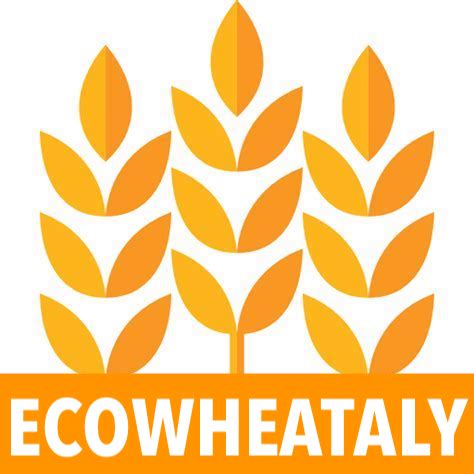When we think of biodiversity, we often picture forests, wildlife, or coral reefs. Yet agricultural biodiversity — the genetic variety of cultivated plants — is just as vital for our survival.
Wheat, cultivated for more than ten thousand years, is a perfect symbol of this link between nature and civilization. It’s one of humanity’s oldest crops, and despite its apparent uniformity today, it holds an extraordinary wealth of genetic diversity.
What Wheat Biodiversity Means
Each variety of wheat (known as a cultivar) carries a unique set of genes that determine its height, resistance to disease, tolerance to drought, and the baking quality of its grain.
However, modern industrial agriculture has gradually replaced thousands of local varieties with a handful of “standard” ones — bred for high yields and compatibility with large-scale mechanization.
This process has led to what scientists call genetic erosion: the loss of unique traits and local populations. According to the FAO, about 75% of agricultural crop diversity has been lost over the last century, as farmers stopped growing or saving traditional seeds.
And yet, those forgotten varieties hold the keys to our agricultural future.
Biodiversity as Insurance Against Climate Change
Biodiversity is not only cultural heritage — it’s also a biological insurance policy.
Every rare gene can hide a useful trait: tolerance to drought, resistance to fungal diseases, or the ability to thrive in saline soils. These traits could one day help secure global food supplies in an increasingly unstable climate.
Researchers call this genetic resilience — the capacity of a crop population to withstand stress without collapsing.
In fields where several wheat varieties coexist, the risk of total loss due to drought or pests is much lower than in monocultures, where all plants are genetically identical.
Local Varieties as the Soul of the Land
Local varieties, also known as landraces, are populations of plants naturally selected by generations of farmers over centuries. They adapted to local microclimates, soils, and farming traditions.
Each one tells a story: the Sicilian Russello, the Tuscan Verna, the Umbrian Frassineto, or the Rieti originario from Lazio.
Beyond cultural value, these landraces bring clear ecological benefits. Many have deep root systems that improve soil structure and water retention, and some are naturally resistant to local pests — reducing the need for pesticides.
Conserving Biodiversity Doesn’t Mean Turning Back
Preserving biodiversity doesn’t mean rejecting innovation. It means integrating old and new knowledge.
Germplasm banks — the genetic “libraries” that safeguard seeds — store thousands of wheat varieties. The ICARDA (International Center for Agricultural Research in Dry Areas) and CIMMYT in Mexico are leading examples.
These seeds are used in modern plant breeding programs to reintroduce useful traits — such as heat or drought tolerance — into new, high-yielding cultivars.
The recent creation of wheat pangenomes, which compare the DNA of dozens of varieties, allows scientists to identify key genes for yield, quality, and adaptation.
In this way, diversity is not just preserved — it becomes innovation.
Italy: A Living Laboratory of Diversity
Italy is one of Europe’s richest countries in terms of wheat biodiversity, particularly for durum wheat.
In recent years, universities, research centers, and farmer networks have revived ancient varieties in short supply chains and organic farming systems.
Projects such as Rete Semi Rurali, CREA-Cerealicoltura in Foggia, and several regional initiatives have shown that conserving diversity is not just ethical — it’s also economically sound.
Traditional grains of high quality can support local economies, strengthen rural identity, and provide stable incomes for small-scale farmers.
An Inheritance for the Future
Preserving wheat biodiversity means protecting our ability to adapt, innovate, and choose.
Every ancient seed is a page of agricultural history — and a piece of our future.
In a world facing climate and food challenges, genetic diversity is humanity’s most valuable capital: a living reserve of solutions waiting to be rediscovered.
As the FAO’s State of the World’s Biodiversity for Food and Agriculture reminds us:
“Global food security depends on the diversity we choose to conserve today.”
This is precisely the mission behind EcoWheataly — to unite research, data, and conservation for a future where wheat remains healthy, diverse, and sustainable.
Sources:
- FAO (2019). The State of the World’s Biodiversity for Food and Agriculture.
- FAO (2023). The State of Food and Agriculture: Water and Biodiversity Challenges.
- ICARDA (2024). Harnessing Genetic Diversity in Wheat Landraces for Climate Resilience.
- CIMMYT (2023). Wheat Pangenome Consortium: Diversity and Genomic Insights for Breeding.
- Rete Semi Rurali (2023). Italian Cereal Diversity and Participatory Seed Management.
- CREA-Cerealicoltura (2024). Local Durum Wheat Varieties in Italy: Perspectives and Environmental Resilience.

